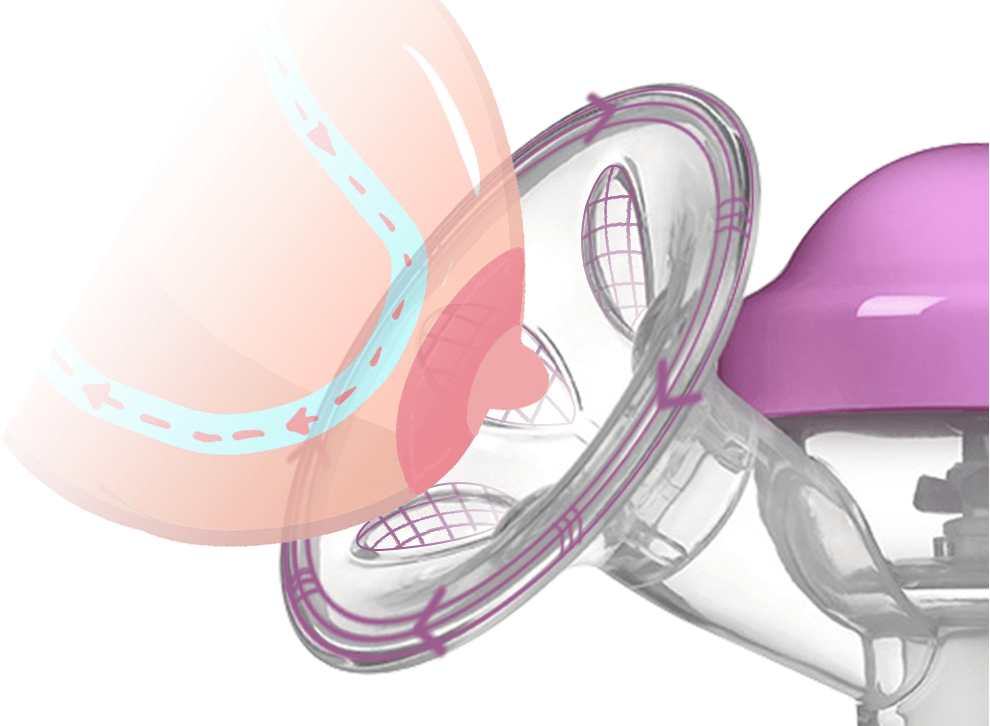It is especially important to have the skills to express, pump and store milk when you can’t give up your job and at the same time can’t give up breastfeeding. With this knowledge, balancing work and breastfeeding becomes less difficult.

Manual milking
Every mother should master how to express milk by hand. The best way to do this is to ask a hospital nurse or an experienced mother around you to show you how to do it by hand. No matter who you are, you may be clumsy at first and it will take a lot of practice to get good at it. So don’t get discouraged at first because you don’t think you’re doing a good enough job.
Steps for hand milking.
Wash and dry hands with warm, soapy water.
Drink a glass of warm water, apply a hot towel to the breast for 5 to 10 minutes and gently massage the breast, gently stroking it from the top towards the nipple and the bottom as well, repeating this several times so that the whole breast is massaged to help stimulate the lactation reflex.
Starting with the most distended, dripping breast, leaning forward so that the nipple is at its lowest point, aligning the nipple with the mouth of a clean bottle and squeezing the hand in the direction of the mammary gland.
The thumb and other fingers are placed in a “C” shape, first at 12 and 6 o’clock, then at 10 and 4 o’clock and so on, in order to empty the breast of all the milk.
Repeat the gentle pinching and pressing inward rhythmically, the milk will begin to fill up and flow out, without the fingers slipping away or pinching the skin.
Squeeze one breast for at least 3 to 5 minutes, and when the milk is less, squeeze the other breast again, and so on several times.
Breast pump

If you need to express milk frequently, then you need to prepare a high quality breast pump first. If you feel sore nipples while breast pumping, you can adjust the suction power, choose the right gear for you, and also don’t let your nipples rub against the contact surface while pumping.
The correct way to open a breast pump
1. Wash your breasts with warm water and massage them first.
2. Put the sterilized horn over the areola to close it tightly.
3. Keep it well closed and use the negative pressure to suck the milk out of the breast.
4. Put the sucked milk into the refrigerator and refrigerate or freeze it until you need it.
Precautions for milking and sucking
If you are going back to work, it is best to start practicing breast pumping one to two weeks in advance. Be sure to learn how to use a breast pump before pumping and practice more at home. You can find a time after your baby has had a full meal or between meals. 2.
After a few days of regular sucking, the amount of milk will gradually increase, and as more milk is sucked out, the breast milk will also increase, which is a virtuous cycle. If the milk production increases more, the mother needs to drink more water to replenish the water.
The duration of sucking is basically the same as the duration of breastfeeding, at least 10 to 15 minutes on one side. Of course, this is only if the breast pump is of good quality and comfortable to use. After you start working, you should also insist on pumping every 2 to 3 hours and at least 10 to 15 minutes on each side to better simulate the frequency of your baby’s breastfeeding. When you go home, make sure to have more contact with your baby and insist on direct breastfeeding to increase the stimulation of lactation by baby sucking, which helps to produce more breast milk.
4. Prepared breastmilk is not enough If your baby’s milk volume increases quickly, prepared breastmilk may not be enough, then you need to increase the number of sucking sessions or increase the number of direct breastfeeding sessions. This is done to stimulate lactation and increase the amount of milk produced. Mothers can take a breast pump to work and pump a few times between work sessions, or adjust the interval between feedings, more frequently at home, once every 2 to 3 hours, and less frequently at work, once every 3 to 4 hours.
Post time: Dec-08-2022